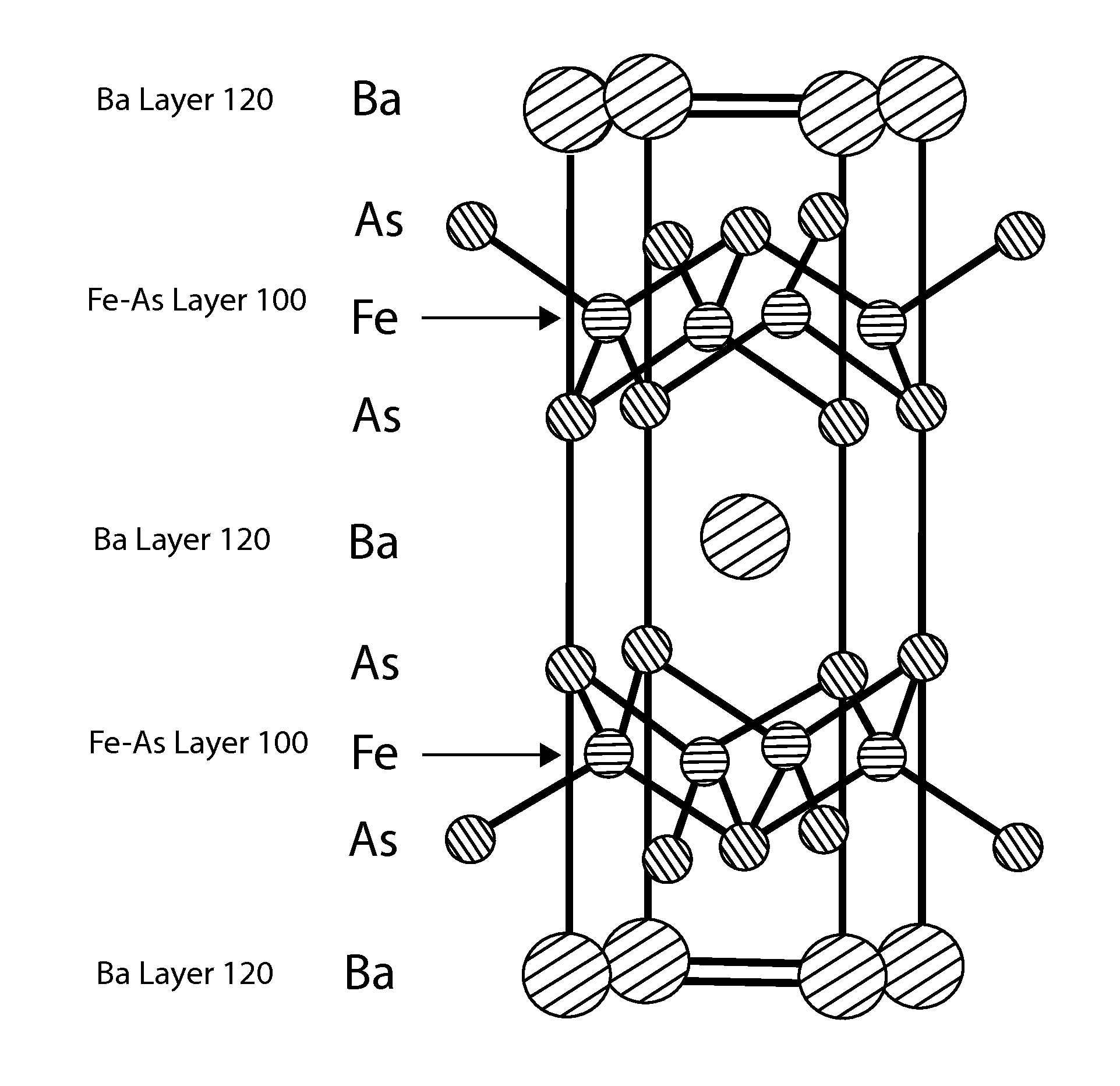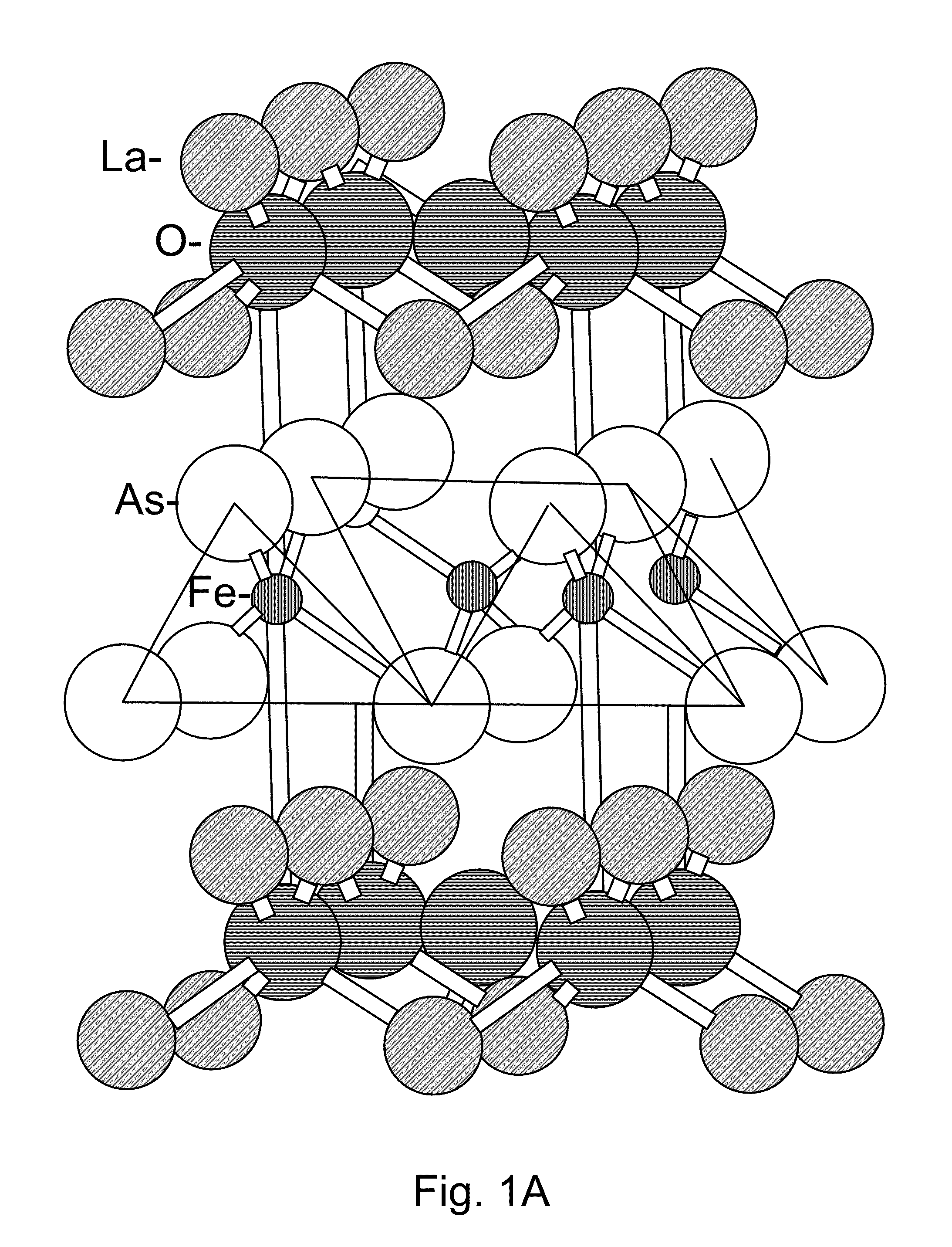Superconducting integrated circuit technology using iron-arsenic compounds
a technology of integrated circuits and iron-arsenic compounds, which is applied in the direction of superconducting magnets/coils, superconductor devices, magnetic bodies, etc., can solve the problems of insufficient technological usefulness of polycrystalline materials
- Summary
- Abstract
- Description
- Claims
- Application Information
AI Technical Summary
Benefits of technology
Problems solved by technology
Method used
Image
Examples
Embodiment Construction
[0023]The crystal structure of LaFeAsO in FIG. 1A represents a family of closely related materials, some of which are superconductors at various temperatures. The crystal structure is tetragonal, with lattice constants a=b=0.4 nm and c=0.87 nm, with some variation in lattice parameters for elemental substitutions. The key functional part of this material is the planar network of Fe atoms in the a-b plane, surrounded by As atoms (the Fe—As layer 100 in FIG. 1A). The Fe atoms provide the conduction bands, and also the spin magnetic moments which may order magnetically. The La—O layers 110 are largely inert, but affect the FeAs layers in two major ways: they may “dope” the FeAs with electrons or holes, and they may structurally strain the FeAs layers. The Fe site may be substituted with other transition metal atoms such as Cr, Mn, Co, and Ni (adjacent in the periodic table). The As site may be substituted with P, just above it in the periodic table, or possibly Sb, just below it. Alter...
PUM
| Property | Measurement | Unit |
|---|---|---|
| critical temperature | aaaaa | aaaaa |
| temperature | aaaaa | aaaaa |
| thick | aaaaa | aaaaa |
Abstract
Description
Claims
Application Information
 Login to View More
Login to View More - R&D
- Intellectual Property
- Life Sciences
- Materials
- Tech Scout
- Unparalleled Data Quality
- Higher Quality Content
- 60% Fewer Hallucinations
Browse by: Latest US Patents, China's latest patents, Technical Efficacy Thesaurus, Application Domain, Technology Topic, Popular Technical Reports.
© 2025 PatSnap. All rights reserved.Legal|Privacy policy|Modern Slavery Act Transparency Statement|Sitemap|About US| Contact US: help@patsnap.com



